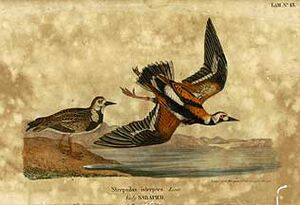Juan Lembeye facts for kids

Juan Lembeye (born in 1816 in Ferrol, Spain, and passed away in 1889 in Culleredo, Spain) was a Spanish naturalist. A naturalist is a scientist who studies nature, especially plants and animals. He is best known for his important book about birds found in Cuba.
Contents
Who Was Juan Lembeye?
Juan Lembeye was born in a region of Spain called Galicia. He moved to Cuba in the 1830s and lived there until the 1860s. While living in Cuba, he became very interested in the many different kinds of birds he saw around him. This interest led him to study and document these birds.
His Famous Book: Aves de la Isla de Cuba
Lembeye wrote a special book called Aves de la Isla de Cuba, which means "Birds of the Island of Cuba." This book was published in 1850. It was the only book of bird illustrations ever published in Cuba at that time. It helped people learn about the beautiful birds living on the island.
How the Book Was Made
Lembeye's book had 38 drawings of birds. Many of these drawings were copied from the famous American naturalist John James Audubon. Audubon was known for his detailed and lifelike paintings of birds. Lembeye sometimes even copied the plants that Audubon had drawn in the background of his bird pictures.
Discoveries and Legacy
Juan Lembeye helped discover some new bird species. He was the first to describe the Bee hummingbird, which is the smallest bird in the world! He called it Mellisuga helenae.
He also discovered two other unique Cuban birds:
- The Cuban solitaire (Myadestes elisabeth)
- The yellow-headed warbler (Teretistris fernandinae)
A Bird Named After Him
To honor his work, a bird called the Cuban gnatcatcher was named after him. Its scientific name is Polioptila lembeyei. This is a common way for scientists to recognize important contributions to their field.
Working with Other Scientists
Lembeye worked with other naturalists of his time. Two of his important colleagues were Juan Gundlach and Victor López Seoane. Scientists often work together to share knowledge and make new discoveries.
See also
 In Spanish: Juan Lembeye para niños
In Spanish: Juan Lembeye para niños

